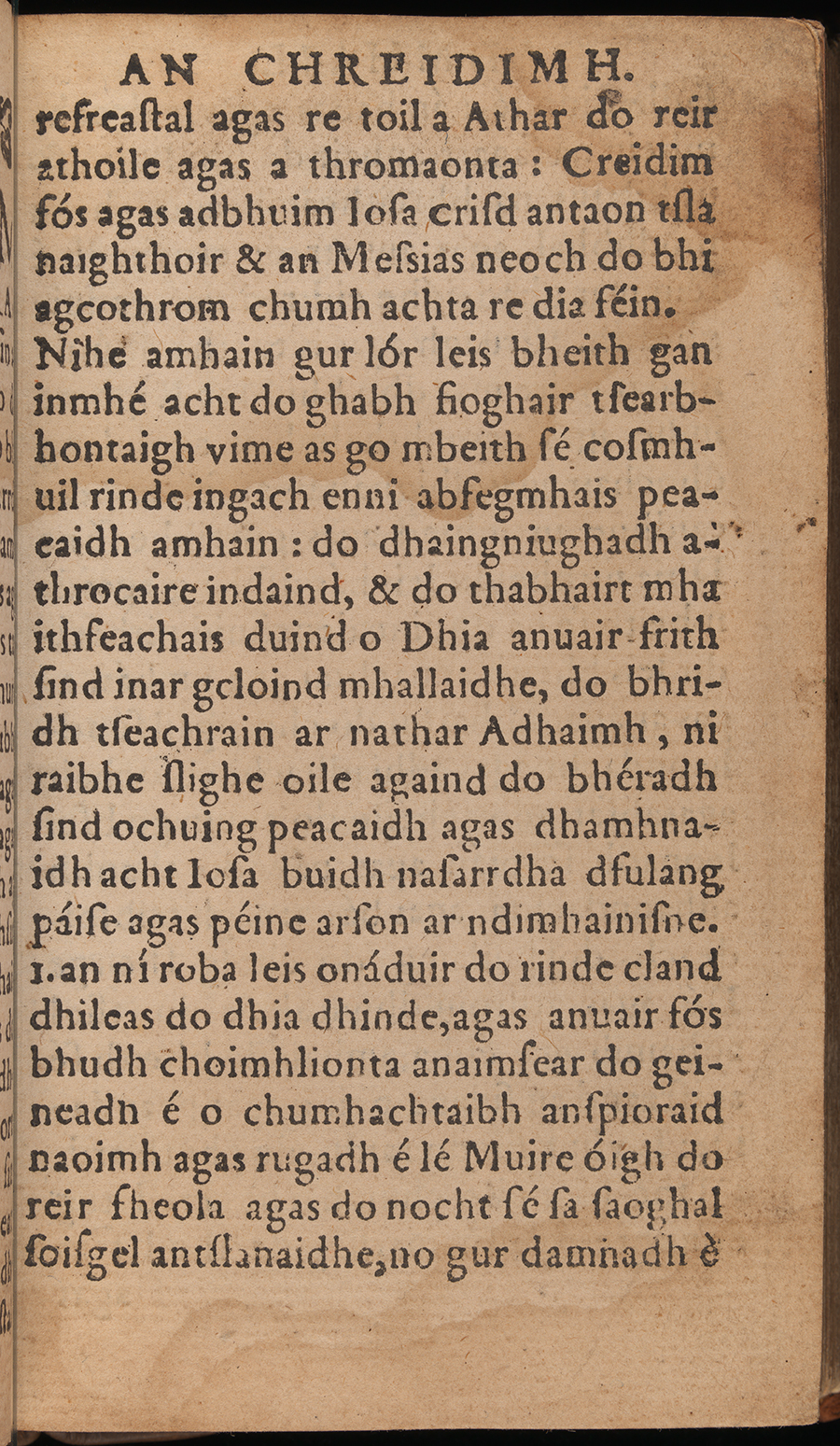This unassuming little book is of the greatest national importance: it is the only copy in Scotland of the first book printed in Gaelic (Gaelic Liturgy; year 1567; shelfmark Dd.10.44.). After the Reformation there was a strong impetus, sponsored primarily by the Campbell Earls of Argyll, to evangelise the Highlands and Islands, where Gaelic rather than Scots was spoken. John Carswell, Bishop of the Isles, adapted John Knox’s Book of Common Order into Scottish Gaelic. It was a hugely ambitious undertaking, particularly considering it would be another two centuries before the New Testament was finally published in vernacular Gaelic. This copy has clearly been well-used.

Digitising the Gaelic Liturgy was one of my first tasks in my new role as assistant photographer here in the Digital Imaging Unit. This makes up part of our Iconics programme where we are aiming to digitise all of our collection’s treasures, making them easily accessible to the public. I will have the privilege of working on many more treasures of a similar status in the coming year.
From a digitisation perspective the Gaelic Liturgy is quite a unique book which presents a few challenges. The book itself is roughly 13 x 8 x 2cm in size with delicate pages. The Liturgy is not paginated and, secondly, Gaelic is not a language that I understand. This then provided very little room for error when working through the book, turning those thin pages!
Unfortunately the only way to cross-check that the image sequence was correct, was to sit with the book and match each page to the individual images. With paginated books one can rely on the page numbers to square things up. The fact that the recto and verso pages were digitised as separate batches meant that the process was all the more complex. After doing my sums, I was surprised to find that I had only missed one page during the capture stages…took a while to find it though! Further, due to the small size of the book I needed to position the camera lens close to the page itself. I therefore had to ensure that the page remained completely flat throughout (i.e. parallel to the focal plane) so not to lead to areas of the image where there was a drop in focus.
The entire booked can be viewed here.



John Bryden
Assistant Photographer
Digital Imaging Unit
Thank you. This is very interesting.